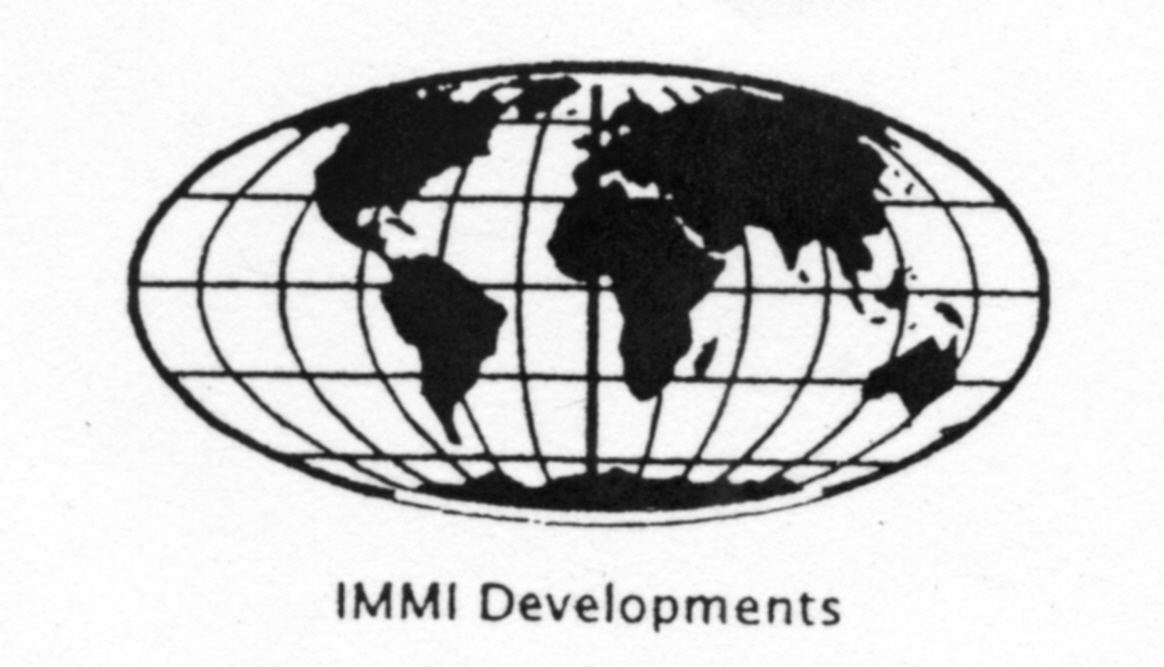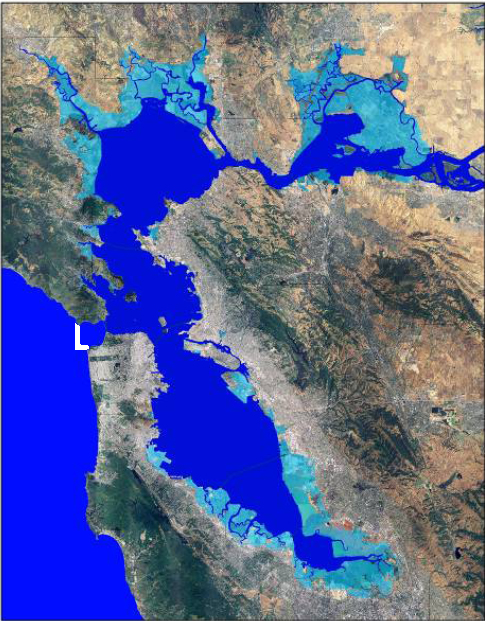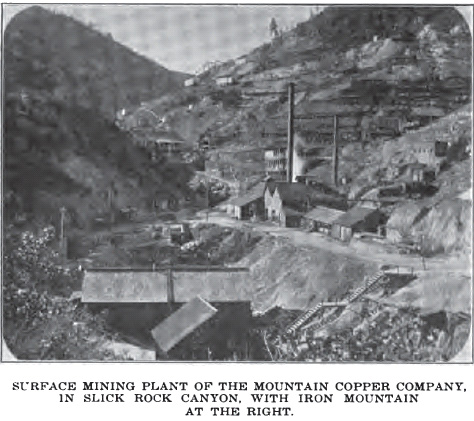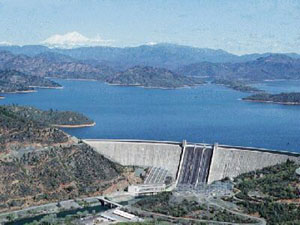THE REAL KILLERS OF THE WINTER RUN CHINOOK SALMON OF THE SACRAMENTO RIVER
(also shows distinct race was probably manmade species introduced at Baird Hatchery)
Why claims to protect anadromous (migratory) fish are false claims
The Congress finds with respect to solid waste—
The Congress finds with respect to the environment and health, that—
The Congress finds with respect to materials, that—
(1) millions of tons of recoverable material which could be used are needlessly buried each year;
(2) methods are available to separate usable materials from solid waste; and
eleemosynary pettifoggers admeasurer (epa)

Or take the case of Bedrock Bank . . .
Bedrock Bank Gets Too Big Too Fast
Bedrock Bank’s new president was determined to turn his bank into the region’s biggest
lender. Bedrock’s loan officers got the message and started making as many loans as they could
for condominium developments, shopping centers, office buildings, and high-priced suburban
housing developments. Loan applications were not always checked as closely as they had been
in the past, and some of the loans were approved more quickly than they had been in the old
days. But nobody seemed concerned because the local economy was strong and real estate
values were rising rapidly.
Everything seemed fine; everyone was making money. But then the economy slowed down, and
things took a turn for the worse. The weak economy forced many businesses to close, leaving
lots of vacant office space. Real estate values plummeted, and many developers fell behind on
their loan payments.
In the end, Bedrock Bank was losing so much money on bad real estate loans that government
regulators were forced to step in and close it. The regulators tried to find a buyer for Bedrock,
but no other bank wanted to get stuck with all the loans that had gone bad. Eventually,
another bank agreed to buy Bedrock if the federal government would agree to keep many of
the problem loans.

The mayor of Pebbleton announces that, since the
colored flowers are so rare and valuable, they are
going to be used as money, with petals for change.
Is this a good idea? What qualities does a good
form of money have? Why? Which of these qualities
do flowers have and which do they lack? What
would happen to Pebbleton’s economy if someone
then discovered a new sunlit cavern with thousands
of flowers growing in it? Should someone control
the growth of those flowers? Who?
Judicial notice is taken of the court dockets in the state court proceedings.
Fed. R. Evid. 201(b); Dawson v. Mahoney, 451 F.3d 550, 551 (9th
Cir. 2006). Judicial notice is also taken of the second round habeas corpus
petition, including attachments, that was filed in the California Supreme
Court. Id. This document was not considered by the district court. The
attachments include the Superior Court’s order denying Porter’s second
round habeas petition and the Court of Appeal’s decision on direct appeal.
Judicial notice is also taken of California disciplinary proceedings. Fed. R.
Evid. 201(b); White v. Martel, 601 F.3d 882, 885 (9th Cir. 2010).
Survey: Half of EPA Scientists Complain of Political Interference, Waxman to Investigate
From the AP : By Paul Kiel - April 23, 2008, 12:40PM
Congressman Walley Herger, (our Congressman)
The EPA regulates FIFRA - the Federal Insecticide, Fungicide and Rodenticide Act
Alle Ding sind Gift, und nichts ohn Gift; allein die Dosis macht, daß ein Ding kein Gift ist.
Liberty's Greatest Commandment
– Thomas Jefferson (1816) [1]
Our Declaration of Independence states that each person is “endowed by their Creator with certain unalienable rights.” These are INDIVIDUAL RIGHTS. They are not subject to revocation by government, not even by majority vote. That is why our founders gave us a constitutional republic, instead of a democracy.
The most important of these rights, Mr. President, are property rights – the right to the fruit of one's labor. In the words of Thomas Jefferson,
“To take from one because it is thought that his own industry and that of his father's has acquired too much, in order to spare to others, who, or whose fathers have not exercised equal industry and skill, is to violate arbitrarily the first principle of association--'the guarantee to every one of a free exercise of his industry and the fruits acquired by it.”
Dr. Benjamin Rush, a signer of the Declaration of Independence, is quoted as warning two centuries ago:
"Unless we put medical freedom into the Constitution, the time will come when medicine will organize into an underground dictatorship. . . . The Constitution of this republic should make special privilege for medical freedom as well as religious freedom."
Interlocutory Appeal Intervention Complaint and Citizen's Arrest of Judicial Taking
"alterius non sit qui suus esse potest" Paracelsus
"let no man that can belong to himself be of another"
BEAUTIFUL MOUNTAIN ROCKS FROM BOULDER CREEK FOR SALE
The border for the Iron Mountain Mine website includes two illustrations from the 1908 edition of the Mineral Resources of California, California State Mining Bureau. Next is a 15th century tapestry of the Fang Hu Mountains, one of Chinese mythologies 5 mountains of the immortals. Above is a sketch by an unknown artist of Ganymede (associated with the astrological sign Aguarius), the Trojan Prince abducted by Zeus from Mount Ida, who was granted immortality and the auspicious and esteemed position of cup-bearer. Ganymede was afterwards also regarded as the genius of the fountains of the Nile, the life-giving and fertilizing river. Thus the divinity that distributed drink to the gods in heaven became the genius who presided over the due supply of water on earth. Arms of the Freeminers, Newland. The Shasta Trinity Standard displays the Alphyn, a mythic creature said to have the mightiest roar, and the Celtic Peacock of everlasting life. The sketch is of the town of Shasta after gold was discovered, The painting is of Shasta from the turn of the last century, Drawn by Küchel & Dresel; lithograph by Britton and Rey. From the Library of Congress American Memory Historical Collections. (Also in the Shasta museum) . The proposed "Ohlone Mountain Dam". This unsigned print of Mount Shasta could have been drawn from the vantage of Iron Mountain Mine.
HAEC MANUS INIMICA TYRANNUS
*"THIS HAND IS THE ENEMY OF TYRANTS".
Frequently Asked Questions (FAQs)
1. What types of activities involving water quality are regulated? |
|
|
|
2. Who regulates water quality and its use? |
|
|
Water quality issues involving discharges to state waters are the responsibility of:
These two agencies administer almost all federal and state water quality programs and standards that are primarily based on either the Federal Clean Water Act or the California Porter Cologne Water Quality Act. Sonoma County is divided between two RWQCB areas and either of these agencies can tell you which agency has jurisdiction at your location: North Coast Regional Water Quality Control Board (NCRWQCB) San Francisco Bay Area Regional Water Quality Control Board (SFBRWQCB) The California Department of Fish and Game has extensive jurisdiction over activities in or alongside waterways, based on protection of habitat and species. Some other state agencies may also have jurisdiction based upon specific project location, such as areas around San Pablo Bay or in some streambeds. Local jurisdictions are the primary agencies responsible for regulation of disposal into municipal wastewater treatment systems and disposal in septic or other ground disposal systems. Some jurisdictions have adopted local ordinances controlling either site erosion or disturbance of local waterways. |
3. What are the basic types of water quality permits and who issues them? |
|
|
Two basic permit types are issued by the Regional Water Quality Control Board for Sonoma County locations. Many of the requirements are similar for the two permits except where noted (see below). The National Pollutant Discharge Elimination System (NPDES) permit structure controls all discharges from a single point into surface waters. The NPDES permit is required for all public and private discharges and sets the conditions for volume, timing, pre-treatment, characteristics and quality, among others. The waste discharge requirement structure controls all discharges that directly or indirectly affect surface water or groundwater. Examples include:
|
4. If my project doesn't involve any those activities listed in #3, is it exempt from water quality regulations? |
|
|
Many activities can affect water quality without any direct discharge to a waterway. Think and ask questions before doing any work at your site to save time, penalty fees, or prevent litigation and complications that may result from trying to obtain permits after the work has been completed. For example, the following are some activities that frequently require a permit and/or are restricted under water quality or water resource laws.
|
5. What are the exceptions to the normal water quality and discharge regulations and permit procedures? |
|
|
Most owners or operators of facilities that discharge waste into a municipal sanitary sewer system do not need to obtain an NPDES permit. However, some industries are required to treat waste before it is discharged to a municipal sanitary sewer system by the United States Environmental Protection Agency (USEPA), the SWRCB, and the respective RWQCB or local wastewater management agency. The local agency advises industries of what requirements govern their property. Stormwater runoff is regulated through two parallel programs that address runoff from urban areas, manufacturing operations and construction sites. Contact the RWQCB to determine if you need to apply and to which agency. For more information, see: Hazardous materials and hazardous waste regulation is typically delegated to local agencies to carry out state mandates and permitting systems. These regulations change rapidly. For the most current requirements, contact the RWQCB or the County Office of Emergency Services. |
6. Do I have to pay any fees to get these permits? |
|
|
When you submit your permit application to RWQCB a fee is required which serves as the first annual fee. After you receive your permit, you pay an annual fee to the SWRCB. The RWQCB determines how much the initial fee is and the amount to be paid annually. A "rating" system is used to determine fees and the criteria is based on the extent of the threat to water quality. |
7. What happens if any of these regulations are violated? |
|
|
It is up to you to find out what regulations affect your property or business. If you violate or misrepresent the conditions that are covered by regulations, the SWRCB or the RWQCB may require:
|
Water Right Permit Process
Permit Issuance
Water right permits carefully spell out the amount, condition and construction timetable for the proposed water project. Before issuing a permit, the State Water Resources Control Board takes into account all prior rights, availability of water in the basin, and considers the flows needed to preserve in-stream uses such as recreation and fish/wildlife habitat.
Records of water use and appropriation statewide are maintained by the state board's Division of Water Rights. Unauthorized appropriation of water is against the law and can result in court actions and fines. See below for Additional Duties.
To obtain a permit, follow these steps:
- File an Application . The permit process is initiated when an application is filed by the person or agency desiring to divert water. This application very specifically describes the proposed project's source, place of use, purpose, point(s) of diversion and quantity to be diverted.
- Acceptance of Application . The state board notifies the applicant within 30 days whether the application is incomplete or accepted. Acceptance establishes priority as of the date of filing.
- Public Notice . The state board then publishes a notice of the applicant's intent and invites public comment. Copies of any protests are given to the applicant, who is required to respond.
- Protest Resolution . The state board takes actions to resolve any protests that have been filed.
- If both parties agree to mutually acceptable conditions, the protest is resolved at this point in the process.
- If it is not resolved, the issue may be solved for small projects through an engineering field investigation report from the Division of Water Rights.
- If it is appealed and for large projects, a formal hearing is held before one or more members of the state board. The state board's decision is based upon the record produced by the hearing.
- Permit Issuance . Two initial state board findings are required before a permit can be issued:
• Unappropriated water is available to supply the applicant
• The applicant's appropriation is in the public interest, an overriding concern in all state board decisions.
• The permit is then issued if the state board determines that the proposed use of water best meets these criteria. If the permit is not approved, see Conditions.
- Licensing . When the project is finished, the terms of the permit are met and the largest volume of water permitted is put to beneficial use. The state board confirms the terms and conditions and issues a license to the appropriator. This license is the final confirmation of the water right and remains effective as long as its conditions are fulfilled and beneficial use continues.
Conditions
If the permit is not approved initially, conditions may be imposed to ensure that the project complies with the criteria. In most cases, the applicant is required to begin project construction within two years of permit issuance. The state board has the authority to enforce the conditions of both the permit and license and may revoke either if they are not met. Less severe action could result or the state board may issue a cease and desist order to ensure the terms are met and in a timely manner.
Other conditions are placed on the permit, such as construction and water use completion dates. The permit applicant may petition for an extension.
Unlike riparian rights, appropriative rights are quantified as the maximum amount ultimately needed by the proposed project ("beneficial users") for as long as the project is deemed reasonable and diligently pursued. Any change in purpose or place of use or point of diversion requires state board approval. The proposed change cannot initiate a new right or injure any other water user.
Additional Duties
The state board has several other major water right responsibilities in addition to administering the permit and licensing system. These duties include statutory adjudication and court reference.
Statutory adjudication is a process by which the comprehensive determination of all water rights in a stream system is made. This happens if a claimant petitions the state board for an adjudication and the board finds the action necessary and in the public interest. The California Supreme Court has held that claimants or petitioners can include not only water users but also those seeking recognition of public trust values on a streamwide basis.
Environmental Review: Consideration of environmental effects is required by the California Environmental Quality Act (CEQA) before a permit can be issued. Large projects that could endanger or degrade natural habitat or water quality usually require preparation of an Environmental Impact Report (EIR). The state board examines the proposed project's potential environmental impacts and determines whether conservation measures will be needed.
Water Quality and Resource Regulations
Two basic water quality permits are issued by the Regional Water Quality Control Board (RWQCB) for your location. Many of the requirements are similar for the two permits.
Surface Water Quality Permits The National Pollutant Discharge Elimination System (NPDES) permit structure controls all discharges from a single point into surface waters. This permit is required of all public and private dischargers, and sets discharge conditions for volume, timing, pre-treatment, characteristics and quality, among others.
The Waste Discharge permit structure controls all discharges that may indirectly affect surface water quality or could affect groundwater quality. Examples include drainage from:
- Agricultural operations, landfills, logging operations, and mines
- Animal feedlots
- Waste from construction or dredging operations
- Food production and processing wastes
- Manufacturing and refining operation wastes
- Municipal and industrial wastes, if percolation or injection to groundwater are the disposal methods
- Residual waste and effluent from cleanup of sites
Other activities affecting water quality
Without any direct discharge to a waterway, many activities can affect water quality. Some actions can discharge solids, such as silt or debris, or stir up stream sediments because of work in or adjacent to a stream channel. Some activities that frequently require a permit and/or are restricted under water quality or resource laws are listed below.
- Bank stabilization and erosion control in a waterway
- Adding or removing riparian trees or vegetation adjacent to a waterway
- Work in an historic or existing wetland, marsh, or vernal pool.
- Removing water from a creek or stream by direct diversion or well
- Commercial or industrial discharges to wastewater treatment works
- Dredging, filling, or a location adjacent to a waterway or wetland
- Timber harvesting in a watershed
- Construction and grading that may increase erosion or stormwater runoff
- Gravel mining or dredging in or adjacent to a waterway
- Use of agricultural chemicals that may move into surface or groundwaters.
Before beginning work on your site, take the time to ascertain the regulations that may apply to the project and save yourself the cost of fines, litigation, and complications that may occur if you try to obtain permits after the fact.
Hazardous materials and hazardous waste regulation is typically delegated to local agencies that carry out state mandates and permitting systems. This area of regulation goes through rapid change. Keep up with current requirements, and contact your RWQCB or the County Off ice of Emergency Services if you are unsure.
Normal Procedures
All information submitted in an application (or technical report) is available to the public under California law unless the person submitting the information identifies trade secrets or proprietary information and justifies withholding information from the public.
1. An applicant (discharger) must provide information on site and owner, facility information, specific description of the discharge, and other characteristics.
2. After the staff of the Regional Water Quality Control Board (RWQCB) determines the application is complete, a recommendation is made to the RWQCB to issue the permit or prohibit the discharge.
3. If the decision is to issue the permit, staff prepares the tentative requirements for the project, including proposed effluent limitations, special conditions, and a monitoring program for the discharge. The specific type of requirement information may differ between the NPDES permit and a Water Discharge Report (WDR).
4. After a period of agency review and a public hearing, the RWQCB may adopt, deny, or modify the staff recommendation. Any decision by the RWQCB on an application may be appealed to the State Water Resources Control Board (SWRCB) within 30 days of the decision.
Exceptions to the Normal NPDES/WDR System
Most owners or operators of facilities that discharge waste into a municipal sanitary sewer system need not obtain an NPDES permit. The United States Environmental Protection Agency (USEPA), the SWRCB, and the respective RWQCB or the local wastewater management agency may require some industries to treat industrial wastes before such wastes are discharged to a municipal sanitary sewer system. The local wastewater management agency advises industries of these requirements.
Stormwater runoff is regulated in certain jurisdictions by programs administered by either the RWQCB or local agencies. These two parallel structures address runoff from urban areas, manufacturing operations and construction sites. Contact the RWQCB for your area to determine if you need to apply and to which agency.
For more information, see
Fees and Fines
Applicants pay a fee to the RWQCB with the permit application. This fee also serves as the first annual fee. The RWQCB determines the fee to be submitted with the application and the annual fee to be paid thereafter if the permit is issued.
After the permit is issued, a discharger must pay a fee annually to the SWRCB.
The "rating" criteria to determine fees is based on the threat to water quality and the complexity of the applicant's proposed discharge. The impacts on water quality can be measured and rated from long-term loss of a designated beneficial use of the receiving water to minor discharges that could degrade water quality without violating water quality objectives, or cause a minor impairment of designated beneficial uses.
The complexity of the proposed discharge can range from those involving hazardous wastes/materials or multiple discharge points to those having passive treatment and disposal systems, such as septic systems with subsurface disposal systems, or dischargers having waste storage systems with land disposal.
Violations
The SWRCB or the RWQCB may require the discharger to discontinue the discharge if the conditions of the permit requirements was violated or misrepresented. Either agency may either assess civil liability up to $10,000 per day or go to court to seek fines of up to $25,000 per day for violations of the discharge requirements or up to $50,000 per day for willful or intentional violations.
Back to Regulatory Guide Home Page
History of Ground Water Law
California ground water law is complicated. Ground water is classified as either percolating ground water or as a subterranean stream.
Ground water not flowing as a subterranean stream is classified as percolating ground water.
When the flow of ground water is confined to a known and defined subsurface channel it is a subterranean stream .
The California Supreme Court established the doctrine of correlative water rights in 1903 that stated overlying users of percolating ground water and riparian users of subterranean streams must share the available supply. If a shortage exists, each overlying or riparian right holder must cut their use to some degree. Overlying and riparian users have priority over appropriators who may take only surplus water.
Percolating ground water is subject to different laws (known as ground water law) and recognizes two general types of rights, overlying and appropriative. Subterranean streams are subject to surface water law that recognizes two general types of rights:
- Riparian : inherent with ownership of overlying land.
- Appropriative : based on the concept of 'first in time, first in right' with a priority date that determines the seniority of the right.
Ground water also can be appropriated and diverted outside of ground water basins by cities, water districts, and other users whose lands do not overlie a ground water basin. In 1914, California created a water right permit process governing the appropriation of surface water and subterranean streams.
Appropriations of subterranean streams require a permit from the State Water Resources Control Board. The method for appropriating percolating ground water is to simply pump the water and put it to reasonable beneficial use. No state permit is required.
Ground Water Overdraft
Long term overpumping of ground water that exceeds natural or artificial replenishment has long been a concern. Known as ground water overdraft, many areas affected in the past have been corrected, but others still exist today. Overdrafting occurs primarily in the San Joaquin Valley and in coastal areas. Although not a serious ongoing problem in Sonoma County , overdrafting has occurred in the vicinity of Rohnert Park and areas of the county where replenishment or ground water movement is slow.
Overdrafting a ground water supply is costly and may result in increased pumping, deepening or drilling new wells, poorer water quality; and reduced aquifer capacity.
Quality
Surface water may become polluted more quickly and readily, but it is better equipped to handle pollution. Exposure to air and sunlight of a swift-moving stream causes some pollutants to evaporate, be consumed or rapidly diluted by aerobic (oxygen-using) bacteria.
Ground water lacks the natural self-cleansing abilities of streams and rivers. Under the aquifer's anaerobic conditions, the environment is relatively bacteria-free and the temperature fairly constant. The lack of turbulence in slowly moving ground water allows the transport of pollutants through the system as a "plume" rather than dispersing and diluting contaminants. With the introduction of new chemical compounds into the environment and major advances in detection technology, traces of unfiltered chemicals are discovered in wells nationwide.
Seawater Intrusion
When ground water is pumped from a coastal aquifer faster than it can be replenished from surface sources, seawater intrudes and contaminates the aquifer. Areas in Sonoma Valley and Petaluma Valley adjacent to San Pablo Bay have experienced growing saline contamination.
Nitrate
Nitrate is widely used as a fertilizer and occurs in animal manure and septic system effluent. Nitrate is not filtered out by the soil and percolating water can transport nitrate from these sources to ground water. It also may migrate with the water into poorly constructed wells. High nitrate levels can cause a potentially fatal condition in infants called methemoglobinemia, or 'blue-baby" syndrome. Areas in eastern Petaluma are contaminated with nitrogen compounds from previous poultry operations.
Industrial and Agricultural Chemicals
The number of household, industrial, and agricultural chemicals has risen dramatically since World War II. More new substances are introduced into the environment each year as we seek to increase the productivity of agriculture and make our lives more comfortable.
Various areas in Sonoma County have groundwater contaminated with hazardous materials or chemicals. In some cases, pollution is relatively stable and does not spread beyond the contamination site. In other circumstances, pollution travels for significant distances in ground water, increasing the problems as it goes.
Water Surge
Hydropower, once shunned because of environmental concerns, is making a comeback
By STEPHANIE SIMON
LEADVILLE, Colo. —The giant pipes wheeze and rumble, the whoosh of water coursing through them as noisy as a freeway. The Mount Elbert hydropower plant high in the Rocky Mountains isn't much to look at—or listen to. But to true believers, it's a road map to a greener future.
Hydropower, shunned just a few years ago as an environmental scourge, is experiencing a remarkable resurgence in the U.S. Dams are still viewed warily; in fact, Congress is considering dismantling four hydroelectric dams blamed for depleting salmon in the Klamath River basin in southern Oregon and northern California.
But engineers and entrepreneurs are pressing an alternative view of hydropower that doesn't involve new dams. They argue that plenty of efficient, economical energy can be wrung from other water resources, including ocean waves, free-flowing rivers, irrigation ditches—even the effluent discharged from wastewater treatment facilities.
There's a surge of interest, too, in adding small power plants to dams built years ago for flood control or navigation—as well as in turning reservoirs into battery packs of sorts, releasing energy when the grid needs it most.
Globally, hydropower provides 16% of electricity, slightly more than nuclear power and closing in on natural gas, according to the London-based International Hydropower Association.
In the U.S. , by contrast, hydropower now provides about 7% of electricity generation. All other renewable sources combined account for about 3%.
Even without building large dams, expanding efforts to draw power from water could add 40,000 megawatts to the grid by 2025, says the Electric Power Research Institute, a nonprofit research firm in Palo Alto , Calif. That's the equivalent of putting at least two dozen new nuclear power plants online.
Pouring It On
Such estimates are stirring action. The U.S. Department of Energy spent nothing on hydropower research as recently as 2007 but allocated $50 million this year. The Federal Energy Regulatory Commission issued 50 preliminary permits for small hydro projects last year, up from 15 in 2007. At least two dozen states have mandated that utilities draw more power from renewable sources—and many include small hydropower as an option, along with wind and solar. Colorado Gov. Bill Ritter recently announced an agreement between his state and the federal government that will streamline the permitting process for developing small hydropower projects in Colorado .
The Department of Energy estimates a new hydro project in 2016 would generate power at a cost of $120 per megawatt-hour. By contrast, the cost per megawatt-hour would be $150 at a wind farm going online that year and nearly $400 at a photovoltaic solar array. (Those figures don't take into account various tax incentives meant to offset the cost of renewable energy, especially wind and solar.)
Hydro also has technical advantages over other renewables. Daily water flow in many areas is far more predictable than wind or sunshine. It's relatively easy to store the energy pent up in water so it can be released when the grid needs it most. And certain types of hydro plants can rev up from low power to full capacity within seconds.
"There remains tremendous untapped potential in North America," says Don Erpenbeck, a vice president at MWH, a global hydropower construction and engineering firm in Broomfield , Colo. "After decades of delay, we are starting to realize that potential."
But Mr. Erpenbeck adds that years-long waits for federal permits and high capital costs make hydropower a tough sell to some utilities and investors. Maximizing water energy in the U.S. , he says, "is going to take some guts."
Countries such as Brazil and China remain committed to large hydroelectric dams and are forging ahead with big projects. Yet they are also looking at smaller solutions favored by environmentalists. The International Hydropower Association estimates that North America has developed nearly 70% of its available hydropower resources and Europe 75%. But the group sees huge potential in South America, Asia and especially Africa , where just 7% of resources have been developed.
Dam Smart
In the U.S. , one strategy gaining popularity is to add power plants to some of the 80,000 existing dams that don't have hydroelectric capacity. Technological advances like turbines that are gentler on fish and oxygen-injection systems that help balance aquatic ecosystems have won favor even among some environmental groups.
In one such project, American Municipal Power Inc. is spending $2 billion to add power plants to three dams on the Ohio River and invest in additional hydropower elsewhere.
The utility's CEO, Marc Gerken, says the new hydropower will cost more initially than coal or natural gas. But after the construction costs are paid off in 30 years, the utility will enjoy cheap power for several decades because the fuel—the rushing river—is essentially free and the plant is designed to run without much maintenance for 60 or 70 years. AMP, based in Columbus , Ohio , is a nonprofit corporation owned and operated by municipal utilities in the six states the company serves.
Other technologies are more speculative. A much-ballyhooed experiment that involved suspending a turbine from a barge in the Mississippi River didn't prove to be worth expanding. The turbine is generating power, but Hydro Green Energy LLC, the Houston-based start-up that developed the device, says it has moved on to more promising ventures. "It's still a power-producing, money-making device," but the economics don't support expansion, says Vice President Mark Stover.
Several companies are experimenting with "low-head" turbines that can pull energy from relatively small volumes of water dropping as little as five feet over natural or man-made falls. One such project, launched by Natel Energy Inc. of Alameda , Calif. , uses low-head technology to extract energy from an Arizona irrigation canal.
Federal scientists say some of these approaches look promising but need more study. "With these new technologies, nobody knows what their environmental impacts might be," says Doug Hall, who manages the water-energy program at the Department of Energy's Idaho National Laboratory.
Pump Action
A less-experimental technology, dating back more than a century, is also gaining currency as a means to store energy and back up the grid: pumped storage, the system used by the Mount Elbert hydro plant outside Denver .
The plant, sitting on the jewel-like Twin Lakes and managed by the Bureau of Reclamation, plays a key role in keeping lights on and air conditioners humming across the West.
At night, when demand on the power grid is low, the Mount Elbert plant sucks water from the lakes, sometimes using wind power to pump that water up into a reservoir above the plant. The reservoir acts as a liquid battery—a huge pool of potential energy.
As the day warms up and the grid shows signs of strain, workers begin to release the water down a 470-foot drop, through devices that turn the pent-up energy into usable electricity. The water eventually pours back into the lakes, where it can be recycled into power again the next evening.
Pumped storage is quite popular abroad; China has 2,200 projects under construction, and India and Ukraine aren't far behind. An analysis by MWH shows that countries as varied as Romania , Thailand , Switzerland , South Africa and Italy are also moving heavily into pumped-storage construction. The U.S. has lagged, but federal authorities saw a surge in permit applications in 2008 and again so far this year.
"No new dams are being built," says Dave Sabo, a senior adviser with the Bureau of Reclamation. But just about every other approach to hydropower, he says, is being studied and tested intensively. Says Mr. Sabo, "All this stuff is in play right now—pretty heavily."
Ms. Simon is a staff reporter in The Wall Street Journal's Dallas bureau. She can be reached at stephanie.simon@wsj.com .
Printed in The Wall Street Journal, page R3
Superfund in the Spotlight December 30, 2010
Cleaning up hazardous waste sites results in properties that are once again liveable and primed for redevelopment. See the cleanup process in action by reading the site profile below.
About Us | Site Map | Privacy Policy | Contact Us | ©2010 Artesian Mineral Development & Consolidated Sludge, Inc.















